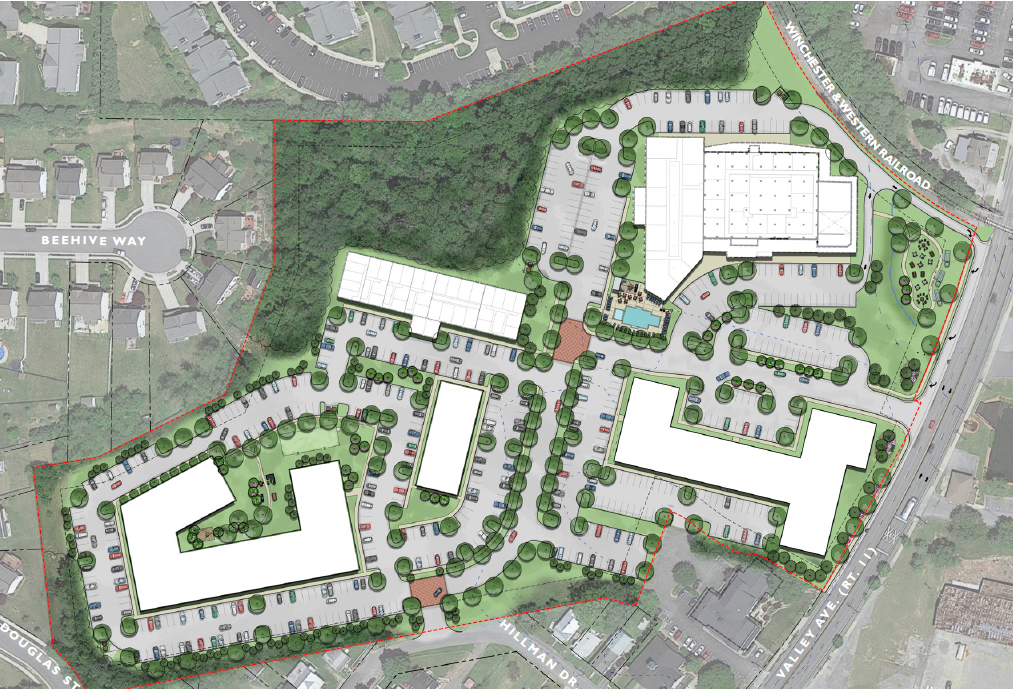
Peanut Crossing
Peanut Crossing | Status: Phase 1-Completd May 2021, future phases TBD | 273 S. Saratoga Street, Suffolk, VA 234341| Facebook |
- Size: many distinct historic/non-historic buildings on a 10-acre site
- Use: Multi-phased, mixed-use: apartments, commercial space, storage
- Cost: Phase 1: approx. $7,400,000, future phases TBD
- Architect: Ratio, PC
- Historic Tax Credit: Commonwealth Preservation Group
REDEVELOPMENT:
The Peanut Crossing project is being redeveloped by Echelon Resources, an experienced development team with a long history of success with adaptive reuse projects. This project utilizes both federal and Virginia historic rehabilitation tax credits which require that any significant historic features be preserved and highlighted. The project plans will be reviewed in detail by both the Virginia Department of Historic Resources and the National Park Service, with regards to compliance with the U.S. Secretary of the Interior’s Standards for Rehabilitation.
SITE HISTORY: The Suffolk Peanut Company constitutes what is likely the largest and most intact historic peanut processing complex in Virginia. The Suffolk Peanut Company was the first successful peanut company in the region and many of the resources in the current complex date to within a few years of the founding of the company in 1898. The warehouses and processing buildings represent the full range of functions historically associated with the site and result in a property with a high degree of integrity and significance. The Suffolk Peanut Company is on the Virginia Landmarks Register and the National Register of Historic Places. It meets Criterion A for Industry as a rare intact peanut processing facility and representative of an industry which once dominated the economy of southeast Virginia. It meets Criterion A for Transportation with the two pronged railroad spur and long loading dock abutting the historic Norfolk & Western railroad line. Finally, it is eligible for Criterion C as an outstanding example of an intact peanut processing facility with numerous early resources with strong integrity. The period of significance runs from 1903, the date of the earliest extant resource, to 1968 when the facility was sold to Goldkist ending its link to the historically-important Suffolk Peanut Company.
The Suffolk Peanut Company is located on a large wedge-shaped ten-acre site on South Saratoga Street in Suffolk, Virginia. The large peanut processing complex consists of numerous warehouses and several processing buildings spread out across the site with many concentrated along the north end bordering the former Norfolk & Western Railroad line. The early twentieth century buildings, which make up a majority of the resources, are brick masonry Commercial Style with some limited articulation. The site is flat with grass and gravel between resources and surrounded by a high chain link fence. There is a small stand on trees on the eastern end of the property. The surrounding area is a mostly light industrial with no sidewalks. With the intact railroad to the north, an intact spur on the property, numerous contributing resources with strong integrity, the overall setting of the property is one that retains much of the historic character and materials.
The Suffolk Peanut Company facility is on the National Register of Historic Places under Criterion A for industry as the best remaining example of a peanut processing plant in southeast Virginia. It is also eligible under Criterion C for Architecture with nearly every building type associated with the processing and storage of peanuts from the early-to-mid twentieth century represented with strong integrity. The period of significance is from 1903, the earliest documented resource, to 1968 when ownership passed from the Suffolk Peanut Company to Goldkist Peanuts. Read more about the site history here.






























